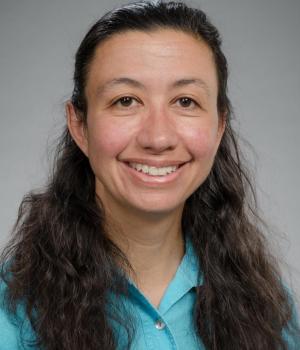Nina Salama
Nina Salama
Dr. Salama obtained her Ph.D. in molecular and cellular biology at UC, Berkeley and was a postdoctoral fellow in the laboratory of Dr. Stanley Falkow in the Department of Microbiology and Immunology at Stanford University. In addition to her position in the Department of Microbiology, she is a Member of the Human Biology Division at the Fred Hutchinson Cancer Research Center.
In the mid 1990's, a bacterium, Helicobacter pylori, was linked to gastric cancer, the second leading cancer killer worldwide. H. pylori, establishes lifelong infection in the stomach of half the human population world wide. The consequence of this infection ranges from undetected gastritis, to ulcer disease, and gastric cancer. This wide range of disease outcomes remains a mystery of H. pylori pathogenesis. Our lab is interested in the mechanisms by which this bacterium can establish and maintain a chronic infection in the unusual environment of the human stomach and the molecular cross talk between the host and the bacteria during the decades long infection. The activation of host cell processes, either through direct action of bacterial products or as part of the host's attempt to contain the infection presumably causes the different diseases associated with H. pylori infection. To approach this complex problem, we are using both global and molecular approaches. Our current projects include:
1) H. pylori genomic diversity: H. pylori has a relatively small genome with approximately 1500 genes. It had been long observed that H. pylori clinical isolates are heterogeneous at the sequence level and using a H. pylori microarray we showed that this variability extends to the presence and absence of whole genes. We further showed that even in the context of a single human stomach there exist multiple clones with unique gene complements. We are currently investigating how this diversity is generated and the consequences of this diversity on patient outcome.
2) Genetic Analysis of H. pylori virulence factors: We use gastric epithelial tissue culture cells to monitor wild-type and mutant bacteria binding to host cells and stimulation of host cell signaling pathways including those activating innate immunity and cell shape changes. To understand bacterial-host interactions in the complex environment of the stomach, which includes many cell types, we employ a mouse model of infection. This allows us to look at the relative fitness of different mutants, their location and their ability to induce host inflammation. Many standard bacterial genetic tools do not work in H. pylori. To get around this handicap we have developed new tools based on in vitro mutagenesis systems and a system to monitor the presence of mutants using the microarray to initiate screens for genes required in the mouse model or under various in vitro conditions. Most recently we have been exploring the genetic requirements for establishing the spiral shape of this bacterium using fluorescence activated cell sorting technologies.
3) Mechanistic studies of H. pylori virulence: In follow up to our genetic and population based screens, we have begun to explore the mechanistic details of how H. pylori genes contribute to persistent colonization.
3a) Cell wall modification and cell shape: Some of our shape mutants (straight or slightly curved rods instead of spirals) also were predicted to have colonization defects in our screen. Based on sequence motifs and structural modeling, we hypothesized that some of these proteins affect cell shape by modifying the peptidoglycan cell wall. We have subsequently shown a subset of shape mutants have altered peptidoglycan profiles. We currently are testing motility in viscous solutions, susceptibility to various stresses and peptidoglycan-mediated innate immune signaling to tease out how these proteins and shape itself contribute to survival in the host.
3b) DNA metabolism: A surprising outcome of our colonization screen was that genes involved in DNA metabolism contribute to stomach colonization. Natural transformation and restriction modification are thought to contribute to and limit, respectively, the remarkable genetic diversity of H. pylori isolates found around the world. How these processes contribute to survival in short-term infection experiments is not clear. We currently are testing several models including genetic interactions between DNA competence and recombination-based DNA repair. To this end we have identified previously unrecognized components of the recombination-based repair machinery and shown they confer protection from DNA damaging agents, enhanced survival during stomach colonization and stimulates at least one gene conversion event in H. pylorii.
